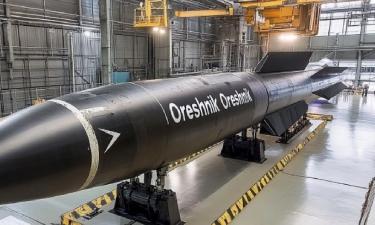K-19, prototype of Hollywood thriller, to be cut up
K-19 was called Hiroshima for the tragic accidents it faced in its life.
The other day legendary K-19 nuclear submarine (serial number 901) was tugged from the Kola Peninsula to the Nerpa shipyard. This very sub with its tragic fate became a prototype for America’s new film “K-19.” However, American script writers perverted facts of the sub’s life so much that Russian veteran submariners decided to bring an action against producers of the film. Majority of Russian submariners acted as consultants during preparation for the film shooting, they told stories about real life of the submarine. As the facts are perverted, the veterans say they have been cheated. A well-known submariner, Hero of the So-viet Union Vadim Berezovsky, who is now living in Russian northern town of Severodvinsk, says that Americans are unlikely to win the trial.
The submarine was constructed at Sevmashpredpriyatiye enterprise in Severodvinsk, launched on October 11, 1959 and came into service on November 12, 1960. In June of 1961, K-19 was included in the North Fleet structure. K-19 became the first Soviet nuclear submarine equipped with ballistic missiles. K-19 together with K-33 and K-55 made up a special brigade of North Fleet submarine troops, on which basis the first flotilla of nuclear submarines was subsequently created.
The K-19 crew won one of the first prizes awarded by the Soviet Navy for the best missile firing. Professional skills of K-19 submariners were very high. Unfortunately, there are some sad moments in the sub’s his-tory.
The submarine was seriously damaged in North Atlantic on July 3, 1961; its power installation broke down, and K-19 was tugged to the base. Eight submariners died in the accident. The sub underwent repair-ing at Sevmashpredpriyatiye, where its reactor compartment was re-placed.
On November 15, 1969, during combat training in the Barents Sea K-19 hit Cato, American submarine; with severe damages it was delivered to the base in Zapadnaya Litsa.
As a result of a tragic fire in the sub’s compartments in North Atlantic on February 24, 1972, twenty eight people died. Within June – Novem-ber 1972 K-19 was on emergency repair, after which it was modernized on a 658-S project. After the repair, K-19 carried out combat missions several times more. The submarine was excluded from the fleet structure in 1990.
So, the legendary submarine is completing its combat mission: K-19 will be utilized at the Nerpa shipyard. K-19 was called Hiroshima for the tragic accidents it faced in its life.
Vitaly Bratkov PRAVDA.Ru
Translated by Maria Gousseva
Read the original in Russian: https://www.pravda.ru/main/2002/07/26/44749.html
Related links:
Subscribe to Pravda.Ru Telegram channel, Facebook, RSS!


